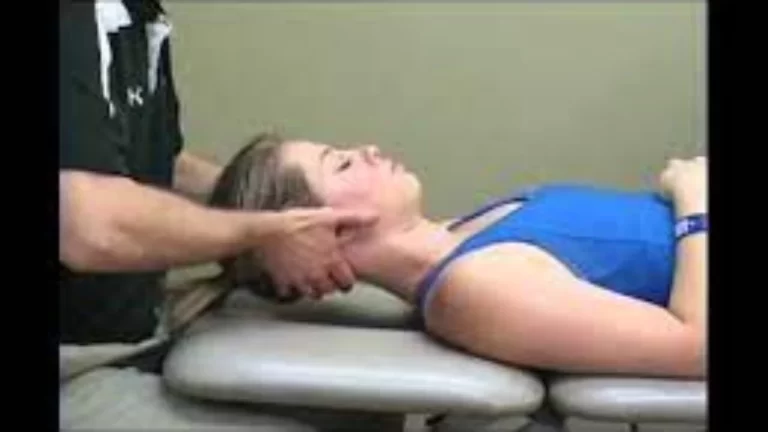Lachman Test
Table of Contents
Introduction
The Lachman test is a specific clinical examination method used to evaluate patients with a suspected anterior cruciate ligament (ACL) injury. The test is based on proper positioning and technique and is considered the most sensitive and specific test for diagnosing acute ACL injuries. This article also describes the appropriate interpretation of Lachman test results in clinical trials so that clinicians can more effectively diagnose ACL injuries in the acute or outpatient setting.
The Lachman test is a physical analysis used to evaluate the integrity of the anterior cruciate ligament in a suspected ACL injury. The test is used to assess the anterior translation of the tibia relative to the femur and is considered a variation of the anterior drawer test. Several studies have shown that the Lachman test is the most sensitive and specific for diagnosing acute ACL tears and is generally superior to both the anterior drawer test and the shear test.
Anatomy and Physiology
The main function of the ACL is to control the forward movement of the tibia and prevent extreme rotation of the tibia. ACL consists of two main packages; the posterolateral bundle and the anteromedial bundle, named for their insertion on the tibia.
The bundles originate on the posteromedial aspect of the lateral femoral joint and lie anterior to the condylar tibial eminence. The Lachman test directly assesses the integrity of this anatomical relationship.
Preparation
The physical exam includes testing for control, palpation, mobility, strength, and stability, as well as performing specific tests of ACL integrity. The injured knee should always be examined for comparison because according to the Lachman test, laxity in patients is not due to the injury.
It is often best to examine the patient immediately after the injury, or at least within a few hours of a suspected ACL injury, to avoid assessing significant swelling and hemarthrosis of the knee, which can lead to guarding the patient and adversely affect the accuracy of testing.
Technique
The patient position is the supine position. Position the patient’s knee at a flexion angle of approximately 20-30 degrees. According to the Bates manual for physical examination, the foot should also be slightly externally rotated.
The examiner should place one hand behind the shin and the other on the patient’s thigh. It is important that the examiner’s thumb rests on the tibial tubercle. When the tibia is pulled forward, an intact ACL should prevent the tibia from moving forward into the femur (“fixed end feel”).
Anterior tibial translation with a soft or sticky end feel indicates a positive test. Anterior translation of more than approximately 2 mm relative to the intact knee suggests an ACL tear (“soft end feel”), as does a complete anterior translation of 10 mm.
Technique Modification
The Stala-Lachman test is recommended for researchers with small hands. The patient lies supine, the knee resting on the examiner’s knee. One hand of the examiner stabilizes the femur against the examiner’s thigh and the other hand applies anterior tension. Adler and coworkers described a variation of this method that they called the “dropping leg Lachman test.”
The patient lies on his back. The test leg is grasped from the side of the examination table and the knee is flexed 25°. One hand of the examiner stabilizes the femur against the table while the patient’s leg is held between the examiner’s knees. The examiner’s other hand is then free to use the previous transfer force. These researchers found that this version of the test showed greater frontal laxity than the classic version. The two legs are compared.
Clinical Significance
Interpretation
Displacement or movement of the tibia of 5 mm or more than that of the normal limb usually indicates an ACL tear, and more than 2 mm of anterior translation in the affected knee compared to the uninjured knee is considered a positive test indicating an ACL tear. injury ACL laxity is graded 1-3, which correlates with mild, moderate, and severe ACL injuries. Mild (Grade I) is 0-5 mm, moderate is 6-10 mm (Grade II), and severe is 11-15 mm (Grade III) of anterior translation of the tibia relative to the uninjured side. If the translation is greater than 11 mm, the examiner should consider an associated medial collateral ligament (MCL) and meniscal tear.
Correct technique is necessary for accurate interpretation of the test, as physicians using the proximal tibial placement were more likely to interpret the Lachman test correctly than those using the distal tibial placement.
Diagnosis
An anterior cruciate ligament tear is definitively diagnosed by diagnostic imaging (MRI) or knee arthroscopy, but in most cases, the patient’s history and physical presentation are reliable diagnoses. Clinical findings suggestive of an ACL tear include acute knee effusion with a positive Lachman, rotational displacement, and/or anterior chest tests.
Test accuracy
The Lachman test is generally considered the best test to assess ACL integrity, with a sensitivity of 87% and a specificity of 93%. The sensitivity of the previous box test is 48% and the specificity is 93%. The reverse motion test has a sensitivity of 61% and a specificity of 97% and has the highest positive predictive value of the three tests. The results indicate that the joint transfer test has a lower sensitivity than the Lachman test because it is generally more difficult to perform in the acute setting due to patient guarding.
Research indicates that both the Lachman and the torsional range of motion test should be performed to confirm an ACL tear due to the high sensitivity of the Lachman and the high specificity of the rotational range of motion test. In addition, a positive pivot shift test is the best to rule out an ACL tear, while a negative Lachman test is the best to rule out an ACL tear.
Several factors can affect the accuracy of the Lachman test. If hemarthrosis is present, the increased volume of the joint can cause pain during movement with extensive guarding and spasms of the femoral muscle group. This can limit the range of motion of the knee and reduce the accuracy of the Lachman test results. A retrospective study showed that in patients with suspected hemarthrosis, the sensitivity of the Lachman test can be improved by aspiration of the knee joint before the examination, which may limit the accuracy of the examination.
In addition, false positive Lachman tests may be associated with an isolated posterior cruciate ligament injury and should be interpreted with caution in patients with a suspected PCL injury diagnosed with either a positive posterior compartment sign or a positive posterior depression sign. In diagnosis, an orthopedic device called the KT-1000 knee ligament arthrometer can be used to objectively measure the anterior-posterior translation of the tibia. The device is more widely used in clinical trials evaluating ACL injuries and less often in clinical practice to diagnose ACL because physical examination is usually reliable.
Improving outcomes for health teams
The Lachman test is widely regarded as the most useful test in the diagnosis of acute ACL injury and should be used in conjunction with the pivot shift test and the anterior drawer test to assess ACL integrity. Rapid evaluation and diagnosis of ACL injuries by a professional healthcare team is essential to expedite further treatment and rehabilitation.
The team includes primary care and paramedics, sports medicine doctors, orthopedists, and nurses. It is important to evaluate and consider other knee structures that are commonly injured with an ACL injury, as isolated ACL tears occur in less than 10% of acute knee injuries. The doctor should also examine and test medial and lateral ligaments, posterior cruciate ligaments, and meniscal injuries along with the Lachman test for a suspected ACL. Correct placement, technique, and interpretation of the Lachman test are essential for the correct diagnosis of an ACL injury.
If an ACL injury is detected, the patient is usually referred to an orthopedic surgeon. Orthopedic nurses help coordinate care, educate the patient and family, and communicate the orthopedic condition.
FAQ
What is a positive Lachman test?
The test is considered positive if the anterior translation of the proximal tibia is greater than the unaffected side and there is no fixed endpoint.
What is the technique for the Lachman test?
The Lachman test is performed in a relaxed supine position, with the examiner flexing the knee approximately 15 degrees and with slight external rotation. Then, stabilizing the femur with one hand and placing the other hand behind the proximal tibia at the level of the joint line, the tibia is pulled forward.
When is the Lachman test positive?
When the tibia is pulled forward, an intact ACL should prevent the tibia from moving forward into the femur (“fixed end feel”). Anterior tibial translation with a soft or sticky end feel indicates a positive test.
What is the difference between positive and negative Lachman tests?
A positive Lachman test or pivot test is a strong sign of an existing anterior cruciate ligament (ACL) tear, and a negative Lachman test is pretty good evidence against this injury.
What is the position of the Lachman test?
The clinical gold standard for detecting this injury is the Lachman test, which is performed with the patient supine and the knee flexed 20-30 degrees.





